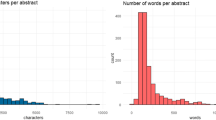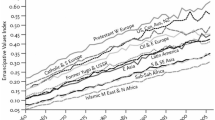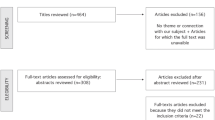Abstract
This essay calls for a fresh critical approach to the topic of censorship, suggesting that anticensorship efforts, while important and necessary, function much like literary prizing. The analysis draws especially on James English’s recent study The Economy of Prestige. There are two central arguments: first, that the librarian ethic of “selection”––introduced by Lester Asheim in 1953 as a counterpoint to censorship––has contributed to the unfortunate construction of the censor as a “moron”; and second, that anticensorship efforts more generally tend toward uncritical canon-making, attributing value to books simply because they’ve been censored or (more typically) challenged.
Similar content being viewed by others
Notes
Thanks to this “logic,” notes English, “each new prize that fills a gap or a void in the system of awards defines at the same time a lack that will justify and indeed produce another prize” (p. 67).
In Cultural Capital, Guillory argues that we’ve come to see literature as necessarily representative of sociocultural identity; we expect literature to represent us and even to rectify ills that we cannot effectively address otherwise in the social or political sphere. The identity politics of representation are clearly at issue in both prizing and censorship, and there may well be subcultures of banned or challenged books that mirror the diversification of contemporary prizing along lines of identity/politics.
The increase in censorship cases after 1950 has been linked with a curricular shift toward more contemporary texts and materials, an increase in the number and complexity of school libraries, an increase in the overall school population, and an upsurge of book sales, to name just a few factors often cited by censorship scholars.
The general idea in the psychoanalytic literature is that we read and write “through” rather than in spite of censorship, and that some of our most creative moments (think the dream-work) come about through censorship.
The idea that censorship or anti-censorship activity should be awarded, however, doesn’t always sit well, especially when awards take clearly commercial form. For an interesting critique along these lines, see Giordano (2008, March 26) in Narco News Bulletin.
References
Asheim, Lester. (1953, September). Not Censorship But Selection. First published in the Wilson Library Bulletin, 28, 63–67. Retrieved April 20, 2008, from http://www.ala.org/ala/oif/basics/notcensorship.cfm.
Bayard, Pierre. (2007). How to Talk About Books You Haven’t Read (Jeffrey Mehlman, Trans.). Bloomsbury: New York.
Becker, Beverley C., and Susan, M. Stan. (2002). For the Office for Intellectual Freedom of the American Library Association. Hit List for Children 2: Frequently Challenged Books. Chicago: American Library Association.
Blanshard, Paul. (1955). The Right to Read: The Battle Against Censorship. Boston: The Beacon Press.
Bosman, Julie. (2008, February 18). With One Word, Children’s Book Sets Off Uproar. The New York Times. Retrieved July 7, 2008, from http://www.nytimes.com/2007/02/18/books/18newb.html.
Bourdieu, Pierre. (1998). Distinction: A Social Critique of the Judgment of Taste (Richard Nice, Trans.). Cambridge: Harvard UP.
Bourdieu, Pierre. (1993). In Randal Johnson (Ed.), The Field of Cultural Production: Essays on Art and Literature. New York: Columbia UP.
Boyer, Paul S. (2002). Purity in Print: Book Censorship in America from the Gilded Age to the Computer Age (2nd ed.). Madison: University of Wisconsin Press.
Burress, Lee. (1989). Battle of the Books: Literary Censorship in the Public Schools, 1950–1985. Metuchen, NJ: Scarecrow Press.
Collier, Christopher. (2002). Censored: An Author’s Perspective (Nicholas J. Karolides Ed., Nat Hentoff, introd. Forewd.), Censored Books II: Critical Viewpoints, 1985–2000 (pp.311–323). Lanham, MD: Scarecrow Press.
Craig, Alec. (1963). Suppressed Books: A History of the Concept of Literary Obscenity (Morris L. Ernest, Foreword.). New York: Meridian Books.
Crutcher, Chris. (2008, July 5). CC Answers the Censors. http://www.chriscrutcher.com/content/blogcategory/48/37/.
Dark Realities: What Can’t Be Said in Children’s Books. (2004). PEN America: A Journal for Writers and Readers, 3, 184–93. Retrieved April 20, 2008, from http://www.pen.org/viewmedia.php/prmMID/1136/prmID/483.
Doyle, Robert P. (2007). Banned Books: 2007 Resource Guide. Chicago: American Library Association.
English, James F. (2005). The Economy of Prestige: Prizes, Awards, and the Circulation of Cultural Value. Cambridge: Harvard UP.
Fish, Stanley. (1994). There’s No Such Thing as Free Speech: And It’s a Good Thing, Too. New York: Oxford University Press.
Geller, Evelyn. (1984). Forbidden Books in American Public Libraries, 1876–1939: A Study in Cultural Change. Westport, CT: Greenwood Press.
Giordano, Al. (2008, March 26). About that ‘2007 Project Censored Award to Al Giordano’: Thanks….but No Thanks! Narco News Bulletin No. 46. http://www.narconews.com/Issue46/article2703.html.
Guillory, John. (1993). Cultural Capital: The Problem of Literary Canon Formation. Chicago: U of Chicago P.
Heins, Marjorie. (1998). Sex, Sin, and Blasphemy: A Guide to American’s Censorship Wars (Rev. Ed.). New York: The New Press.
Heins, Marjorie. (2001). Not in Front of the Children: “Indecency”, Censorship, and the Innocence of Youth. New York: Hill and Wang.
Intellectual Freedom Manual. (2006). 7th Ed. Comp. Office for the Intellectual Freedom. Chicago: American Library Association.
Jefferson Muzzles. (2008, July 7). The Thomas Jefferson Center. http://www.tjcenter.org/muzzles/.
Karolides, Nicholas J., Burress, Lee, and Kean, John M. (Eds.). (1993). Censored Books: Critical Viewpoints. Lanham, MD: Scarecrow Press.
Karolides, Nicholas J. Ed., and Hentoff, Nat. introd. Forewd. (2002). Censored Books II: Critical Viewpoints, 1985–2000. Lanham, MD: Scarecrow Press.
Kidd, Kenneth. (2007). Prizing Children’s Literature: The Case of Newbery Gold. Children’s Literature, 35, 166–190.
Kirch, Claire. (2003). Challenging the Challengers. Publishers Weekly, 250.37, 18–20.
Klein, Norma. (1986). On Being a Banned Writer. The Lion and the Unicorn, 10, 18–20.
Krug, Judith F. (2006). ALA and Intellectual Freedom: A Historical Overview. Intellectual Freedom Manual. In 7th Ed. Comp. Office for the Intellectual Freedom (pp. 14–44). Chicago: American Library Association.
Ladenson, Elisabeth. (2006). Dirt for Art’s Sake: Books on Trial from Madame Bovary to Lolita. Ithaca: Cornell University Press.
Lesesne, Terri S., and Chance, Rosemary. (2002). For the Young Adult Library Services Association. Hit List for Young Adults 2: Frequently Challenged Books. Chicago: American Library Association.
Mazer, Norma Fox. (1993). Not Laughable, But Lethal. In Nicholas J. Karolides, Lee Burress, and John M. Kean (Eds.), Censored Books: Critical Viewpoints (pp. 19–24). Lanham, MD: Scarecrow Press.
McKeon, Richard, Merton, Robert K., and Gellhorn, Walter. (1957). The Freedom to Read: Perspective and Program. New York: R. R. Bowker.
McLean, Kristen. (2007, February 24). Thoughts on the Great Scrotum Kerfuffle of 2007. Retrieved July 7, 2008, from http://pixiestixkidspix.wordpress.com/2007/02/24/thoughts-on-the-great-scrotum-kerfuffle-of-2007/.
Monks, Merri M., and Pistolis, Donna Reidy. (1996). For the Young Adult Library Services Association. Hit List: Frequently Challenged Books for Young Adults. Chicago: American Library Association.
Morgan, Candace. (1995). Fighting the War Against Censorship: A National Perspective. Library Journal, 120, 36–38.
NCTE/SLATE Intellectual Freedom Award. (2008, July 7). National Council of Teachers of English. http://www.ncte.org/about/issues/censorship/awards/107130.htm.
Pistolis, Donna Reidy. (1996). For the OIF. Hit List: Frequently Challenged Books for Children. Chicago: American Library Association.
Salvner, Gary M. (Winter 1998). A War of Words: Lessons from a Censorship Case. The Alan Review 25.2. Retrieved June 30, 2008, from http://scholar.lib.vt.edu/ejournals/ALAN/winter98/salvner.html.
Acknowledgment
Thanks to Anne Phillips, for pointing me toward Chris Crutcher’s anticensorship activities.
Author information
Authors and Affiliations
Corresponding author
Additional information
Kenneth Kidd is Associate Professor and Graduate Coordinator of English at the University of Florida, where he teaches courses in children’s literature and culture. He is the author of Making American Boys: Boyology and the Feral Tale (U Minnesota P, 2004) and coeditor of Wild Things: Children’s Culture and Ecocriticism (Wayne State UP, 2004).
Rights and permissions
About this article
Cite this article
Kidd, K. “Not Censorship but Selection”: Censorship and/as Prizing. Child Lit Educ 40, 197–216 (2009). https://doi.org/10.1007/s10583-008-9078-4
Received:
Accepted:
Published:
Issue Date:
DOI: https://doi.org/10.1007/s10583-008-9078-4




